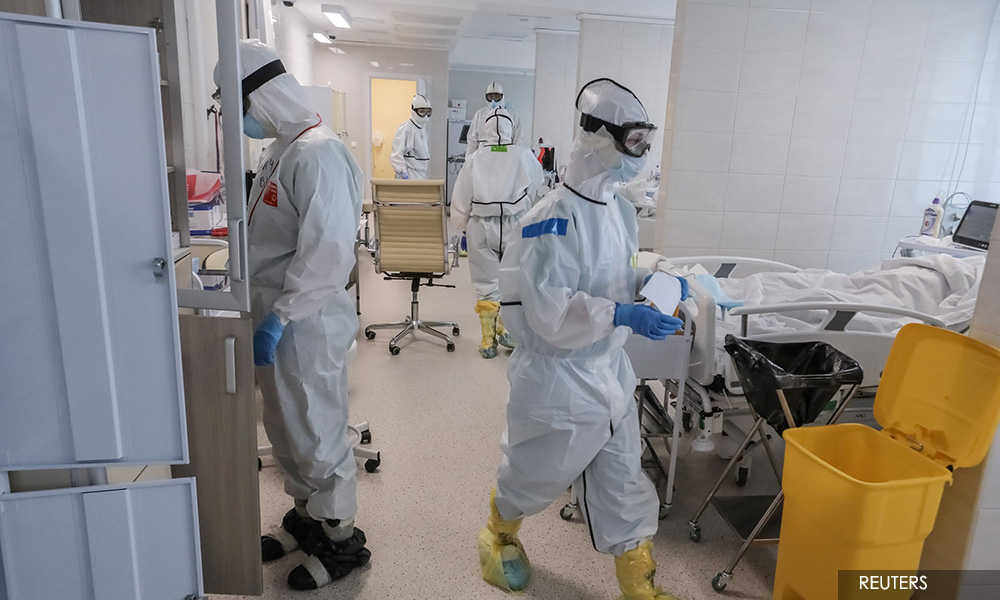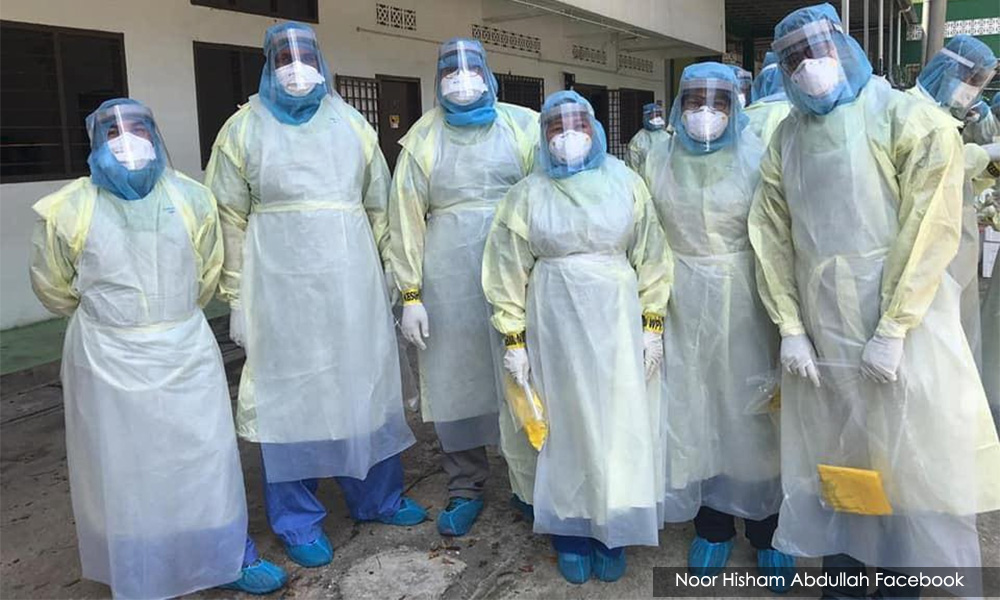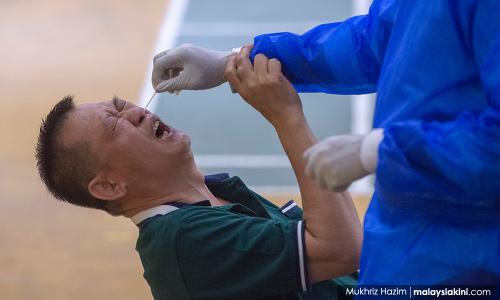LETTER | About time we changed strategy in Covid-19 war
LETTER | A year on after the first Covid-19 case in Malaysia, it is clear that the government is struggling for a comprehensive solution. This means the rakyat will continue to suffer until, perhaps, an effective vaccine programme can be implemented.
Have we learned ( if at all ) lessons from countries that are succeeding or have failed ( as the case may be ) to control the pandemic?
For one whole year, the people have endured what was asked of them and from them. Whole sectors in the communities have to bear the pain and suffering of the pandemic.
Yet, we are constantly dismayed and disgusted to read and hear about how our career politicians and leaders have failed to deliver their share of what is needed - stable leadership in this time of crisis. Instead of rallying together to fight the virus, they are back to business as usual - fighting one another and, in the process, dividing the rakyat for their own personal expediency.
At the outset, a year ago, we had already stated that the Ministry of Health cannot fight this war alone.
On many occasions, we have urged the ministry to mobilise the private general practitioners (GPs) in this war. The GPs, the unacknowledged frontliners, must be engaged and involved in a nationwide, meaningful and comprehensive private-public partnership effort to help stem the tide.
At present, exactly who and where is the pool of infection must be openly identified and addressed.
The strategy of wholesale MCO-lockdowns based on geographical basis will clearly not work for the present diseased landscape.
Continuing with this will surely destroy the economy and not the virus.
The current active pool of the infected must be analysed and segregated based on important socio-demographical parameters. We are informed that they were mainly foreign workers in the construction and manufacturing sectors. In which case, the mitigation measures must be focused on them with all due diligence, care and compassion. Employers in this sector must be brought in as active collaborators to help stem such clusters.

A valid question that demands an answer is: what are the measures being taken to address the transmission between undocumented immigrants and foreign workers who are living within the general community?
Clearly, such workers are likely to pass the infection in the community as they are directly in contact with others in activities of daily living be it in markets, eateries and public transport facilities.
Until this is addressed and managed appropriately, breaking the chain of community transmission by just locking up foreign workers cannot be the answer.
The present trend of increasing daily infection is alarming. It has been projected to hit 8,000 new cases per day by April.
This would mean that the pool of infectious cases in the community would now have reached tens and perhaps hundreds of thousands, many of whom are still undetected and actively spreading the disease.
For one whole year, mitigation measures to reduce this reservoir of active infection were mainly mandatory quarantine and admission to designated hospitals if tested positive. It is costly and not effective when there is significant community transmission. This has resulted in a system that is inflexible and therefore unable to cope with the escalation in infections.
The Covid Assessment Centre (CAC) will be overwhelmed even at its commencement. The projected CAC’s process is cumbersome and dependent on existing MOH’s personnel who are already strained to the limits.

Furthermore, the CAC approach is not the way to manage patients and their families. The GP nearest to the home must be involved to give the personalised quality of care and clinical monitoring. This will also assist in the detection of patients at risk of complications.GPs can also help in screening and testing contacts.
Why was this not clearly embedded in the CAC work process module? Is this further evidence of a lack of commitment in the call for meaningful private-public partnership programme?
Once a positive case is confirmed in a household, it is very likely that members of the whole household are already exposed and may be infected as well.
Many of the currently touted recommendations on what families should or should not do are like closing the barn door after the horses have bolted. What is needed is to exercise sensible precautions and maintain household-based self-quarantine so as not to spread the disease.
A year ago, the Federation of Private Medical Practitioners’ Associations Malaysia (FPMPAM) had submitted to the MOH a detailed proposal for a private-public partnership programme to be implemented nationwide, using existing GPs and primary care doctors. At that time, hydroxychloroquine was the rising star for Covid treatment. Today, other medications have emerged as possible treatment modalities.
The proposed programme called for “early diagnosis and early treatment of prima facie cases of Covid-19 at the GP-primary care level, that is, at the community level where the main pool of infectious cases lurks. It is aimed at reducing the size of this pool to below critical mass whereby it will no longer be a public health danger. It was aimed at supplementing the existing public health measures of testing and quarantine.

In the proposal, it was pointed out that the 7,000 or more GPs, well-located around the country, are a valuable resource that should be actively mobilised and equipped with personal protective equipment, medications and the mandate to treat patients in the community. The MOH should provide GPs with whatever currently recommended therapeutic options for Category 1 and 2 patients.
In the event where mass testing is not feasible, the proposal called for GPs to treat patients with prima facie evidence of the disease (presumptive diagnosis) based on accepted clinical criteria. This was the other battleground that should have been opened up, using the enormous GPs' strategic capability.
Each GP treating up to 20 patients daily will be able to provide treatment for thousands of early cases of Covid-19. In a short time, they would have the capacity to reach millions of patients in a community-based setting.
The aim is to treat large number of early patients in the shortest time possible to bring the infectious pool to below the critical mass in order to break the chain of transmission. It is not unreasonable to envisage that it will also modulate the progress of the disease and reduce the progress to severe disease and hopefully, the number of hospital admissions.
As with regard to costs, it is clear that treatment of a presumptive case in the community setting is cost-effective as compared to a hospital setting.
To be infected with Covid-19 is not an offence. It ought not to carry any social or moral stigma.
The previous media narrative with threats of compulsory lockdowns, quarantine, isolation from loved ones, barbed wire with armed personnel cast a negative image of the disease and its sufferers. It drives patients and those who may be asymptomatic to go into hiding, which then makes accurate reporting and contact tracing even more difficult.
The MOH needs to relook at its public media strategy to encourage people to come forward voluntarily.
It is about time we changed the narrative to encourage full voluntary community participation. This strategy together with an efficiently executed vaccination programme will hopefully break the chain of transmission.
DR STEVEN KW CHOW is president of the Federation of Private Medical Practitioners’ Associations Malaysia (FPMPAM).
The views expressed here are those of the author/contributor and do not necessarily represent the views of Malaysiakini.
RM12.50 / month
- Unlimited access to award-winning journalism
- Comment and share your opinions on all our articles
- Gift interesting stories to your friends
- Tax deductable
